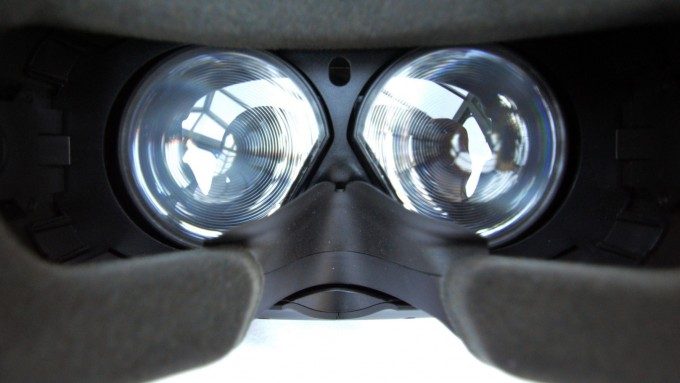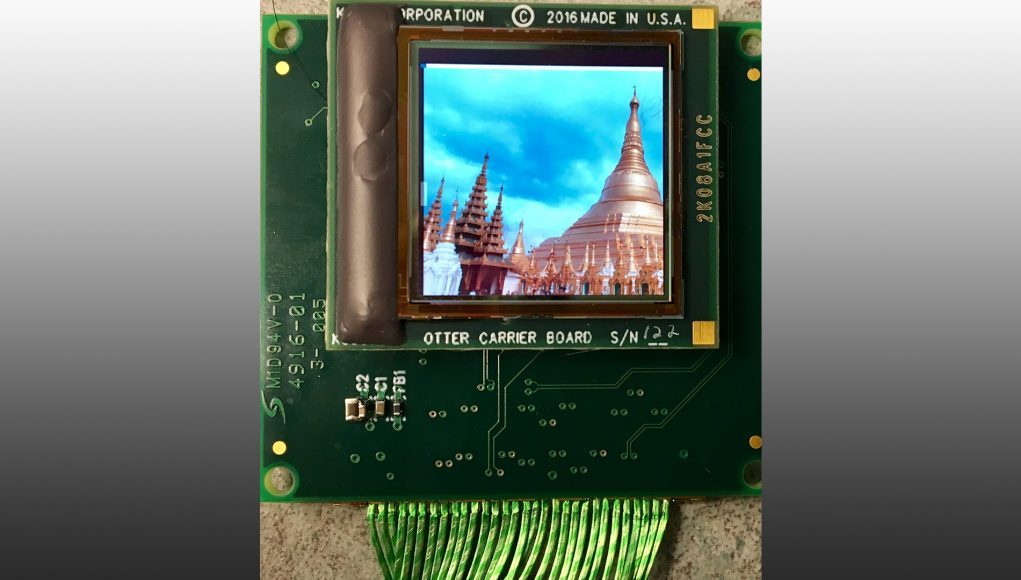Display specialists Kopin have unveiled a tiny, high resolution OLED ‘microdisplay’ designed specifically for the use inside immersive headsets. It’s dubbed ‘Lightning’ and it could open the door to a thinner and lighter form of VR headset.
Myriad VR hardware continues to be announced at CES 2017 as the space still remains one of the technology industry’s hot topics. Among them, a tiny new display from a company called Kopin, one that’s not only interesting but potentially extremely pertinent to next generation VR hardware.
Kopin, a company who designs and manufactures displays (among other components), are extending their reach to immersive headsets. They’ve debuted a new display called ‘Lightning’, an OLED microdisplay boasting a 2048 x 2048 pixel resolution and an impressive 120Hz refresh rate at a diminutive size of 1 inch diagonal. On top of that, the display boasts low power consumption, low heat dissipation, and a low refresh latency of 10 microseconds.
In order to demonstrate the display as a solution for mobile VR, Kopin have integrated it with their own patented optics dubbed ‘Pantile’. Using these, Kopin state they can wring a 90 degree FOV (Field of View) from the displays, all in a form factor that is no larger than a thick pair of glasses, according to a new report.
 In the past, microdisplays were seen as unsuitable for immersive HMDs as lens technology couldn’t provide the high magnification needed for such small displays without exhibiting distortion and artefacts. Today we have companies who are starting to develop novel optical solutions that get around this, bending light innovative compared with traditional lenses in order to achieve high FOV. The company eMagin for example debuted a similar solution with 2k by 2k per eye and with their own specialized optics technology to provide a 100 degree FOV.
In the past, microdisplays were seen as unsuitable for immersive HMDs as lens technology couldn’t provide the high magnification needed for such small displays without exhibiting distortion and artefacts. Today we have companies who are starting to develop novel optical solutions that get around this, bending light innovative compared with traditional lenses in order to achieve high FOV. The company eMagin for example debuted a similar solution with 2k by 2k per eye and with their own specialized optics technology to provide a 100 degree FOV.
Kopin’s optics seem to be using something similar to fresnel technology, which both the HTC Vive and Oculus Rift use. However, thanks to the ridged nature (see image inside the Vive consumer headset below) of this lens type, we’ve seen that fresnel optics produce ‘god ray’ or visible ‘ringing’ artifacts that can distract from the VR experience. It’s unknown yet how much of a problem that poses for these new optics – which in conjunction with this tiny new display must magnify more greatly – may exacerbate certain artifacts like those. On the other hand, Kopin has shown interest in providing the display to customers and partners, so coupled with advanced optics from other sources, the end result could be less visual issues.
 Some other interesting details about the new microdisplay is the ability for Kopin to manufacture at $50 per panel, at least according to John Fan, the CEO of Kopin, who said as much in a recent interview. Fan also teased that their roadmap for “late 2017” was to increase the display’s resolution to 3k x 3k. For comparison, the Rift and Vive are 1080 x 1200 per eye so, if successful, Kopin’s new display could triple that resolution.
Some other interesting details about the new microdisplay is the ability for Kopin to manufacture at $50 per panel, at least according to John Fan, the CEO of Kopin, who said as much in a recent interview. Fan also teased that their roadmap for “late 2017” was to increase the display’s resolution to 3k x 3k. For comparison, the Rift and Vive are 1080 x 1200 per eye so, if successful, Kopin’s new display could triple that resolution.
We’ve not yet seen’s Kopin’s technology in action yet of course, and clearly there are some significant challenges to overcome as detailed above. But if the company can pull it off, we could see that dream ‘sunglasses’ form factor for VR devices a little sooner than we expected.







